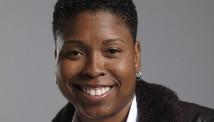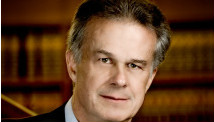STORY HIGHLIGHTS
- In some areas, the difference in high temperatures will change by 40 degrees in a few days
- Cold air is meeting warm, humid air, resulting in turbulent weather
- The jet stream's impact on weather seems to be different so far this year, meteorologist says
- Don't put your warm coat back in the closet -- February might be pretty cold
(CNN) -- Charlie Gribble got a new sled and new ski pants for Christmas. But the presents the 3-year-old and his brother received still have the price tags on them.
While January in Chicago is usually a good time to play in the snow, Charlie's mom, Maureen, had different plans earlier this week. She told her sons they were going to the park to ride tricycles and play basketball.
"But when do we get to go sledding?" Charlie asked.
Well, Charlie, you should just have to wait about 48 hours.
Albany, New York
HIDE CAPTION
<<
<
1
2
3
4
5
6
7
8
9
10
11
12
>
>>
Blast of Arctic air
HIDE CAPTION
<<
<
1
2
3
4
5
6
7
8
9
10
11
12
13
14
>
>>
It's been that kind of week in Charlie's hometown of Chicago, where it went from a record-breaking high temperature of 63 on Tuesday morning to thunderstorms moving in, followed by snowfall.
And the wacky weather wasn't just in the Windy City.
By the time the weekend arrives, much of the country will have experienced a temperature roller coaster taking folks from shorts and T-shirt weather to conditions that require heavy coats and gloves.
Kansas City saw highs into the mid-70s recently, but temperatures dropped 40 degrees over several days after a surge of Arctic air arrived. In Richmond, Virginia, it was 72 on Wednesday, and on Friday it is supposed to be in the upper 30s.
High winds, tornado trap Georgia residents, turn over cars
Tuesday saw 240 record highs set across 27 states.
Portions of eastern Texas saw record highs -- it was 91 degrees Tuesday in Corpus Christi -- as warmer, moist air from the Gulf of Mexico surged into the central and eastern part of the country.
This kind of weather wouldn't be so unusual if it were spring or fall, but there seems to be something different about the jet stream -- the flow of air that divides cold and warm air -- this year, said CNN meteorologist Dave Hennen.
The jet stream flows west to east, typically at 100 mph, although its wind speed can often top 200 mph. If you visualize it as a line with a pattern of bumps and dips, those curves have been much taller in January, Hennen said.
"We've always had dips and valleys in the pattern, but this year they have been very large," he said. "It's also unusual that you have that much warm air that far north at this time of year. It's almost unheard of."
The unseasonably warm weather has been good for going to the park, but it also led to the severe weather that developed Tuesday night and Wednesday as cold air moved east, clashing with the warm, wet air.
"Where there is so much moisture in the air, the cold air won't let it stay there," CNN meteorologist Chad Myers said. "The cold air pushes into the warm air, (and) the rain and the humidity in the air has to fall out."
And here come the storms.
"It's the clash between warm and cold temperatures that enables such things as tornadoes, hail and strong winds to occur," Jim Hoke, the director of the Hydrometeorological Prediction Center in College Park, Maryland, said.
J. Shepherd Marshall, the president of the American Meteorological Society, said in an e-mail that the cold temperatures that preceded this week's record highs may have two factors behind them. One of those is what meteorologists call a stratospheric warming event.
That caused the pressure holding back the cold air in the Arctic to weaken -- as if someone opened the refrigerator door of the North Pole. That cold air will now slide into the United States, leading to a frigid February, the website Climate Central explained.
It's something that has been happening more often in recent years.
"Stratospheric warming events have been increasing in frequency the past decade or so -- possibly related to diminishing sea ice," Marshall said.
That might be linked to climate change, but he cautioned that one week of extreme temperature changes does not equal pinpoint evidence of global warming.
"Weather is to your mood as climate is to your personality. You cannot judge climate by a day or week," he said.
The other factor is a weather phenomenon that circles the world at the equator called the Madden-Julian Oscillation.
"Because the MJO influences (temperature) through tropical rainfall, it can modify weather patterns far away from the equator," Climate Central reported.
In Chicago, people like Corey Lubowich enjoyed a short break from the cold. Lubowich, a 24-year-old theater producer who grew up in the suburbs, said he doesn't ever remember a week like this in January.
"Chicago weather is generally unpredictable, but particularly so this winter," he said.
The other day he walked out of his place bound for the gym wearing just a hoodie and pants. But on Friday, it'll be back to the layer strategy -- T-shirt covered by hoodie covered by thick jacket. And add a scarf, hat and gloves.
Maureen Gribble, who also grew up in Chicago, said she had a friend who just moved there from California and was puzzled by the mild winter.
"I didn't want to burst her bubble," Gribble said.
The stay-at-home mom said she helped her buddy get set up for the real winter.
After all, there is no bad weather, just bad clothing choices.
It looks like Gribble and her family will be bundling up again this weekend when they head up to Wisconsin. It's going to be in the 20s. She hopes there'll be a lot of snow, and Charlie will get a chance to finally jump on that sled.
iReport: Finding art in icy weather


 iPhone, iPad and Mac are trademarks of Apple Inc., registered in the U.S. and other countries. App Store is a service mark of Apple Inc.
iPhone, iPad and Mac are trademarks of Apple Inc., registered in the U.S. and other countries. App Store is a service mark of Apple Inc.










